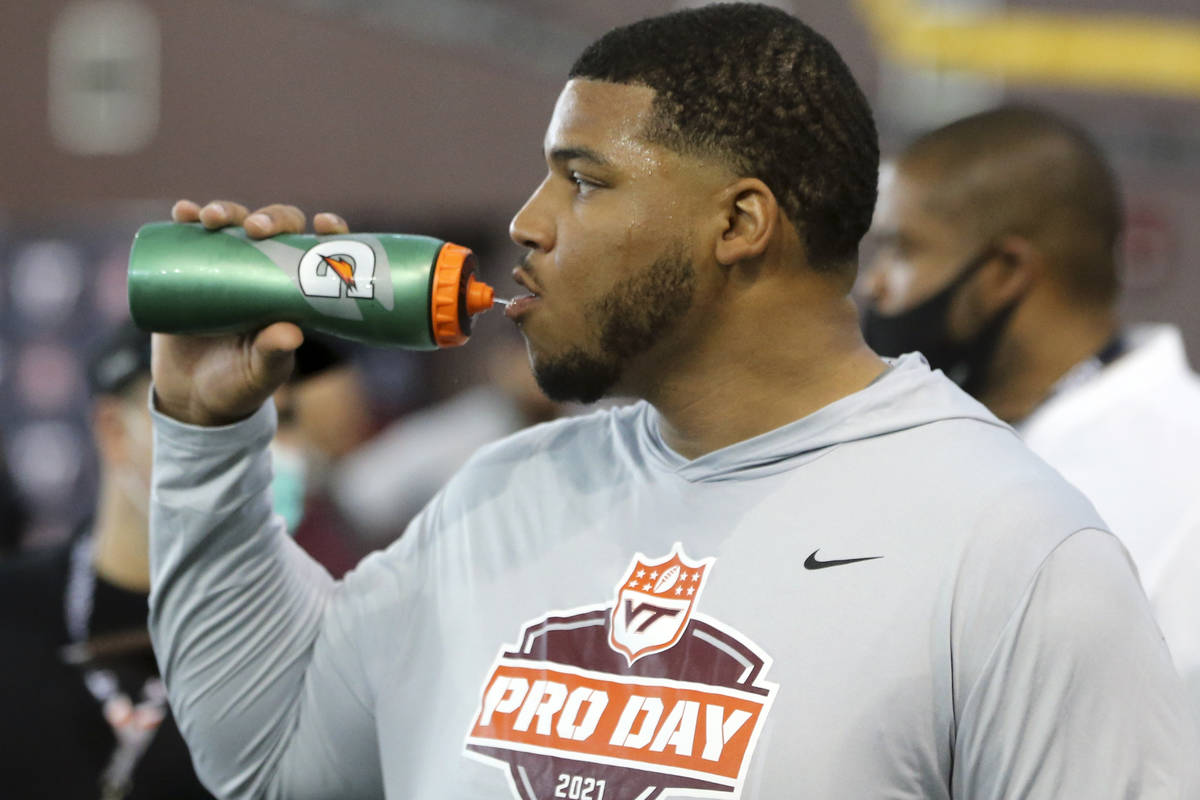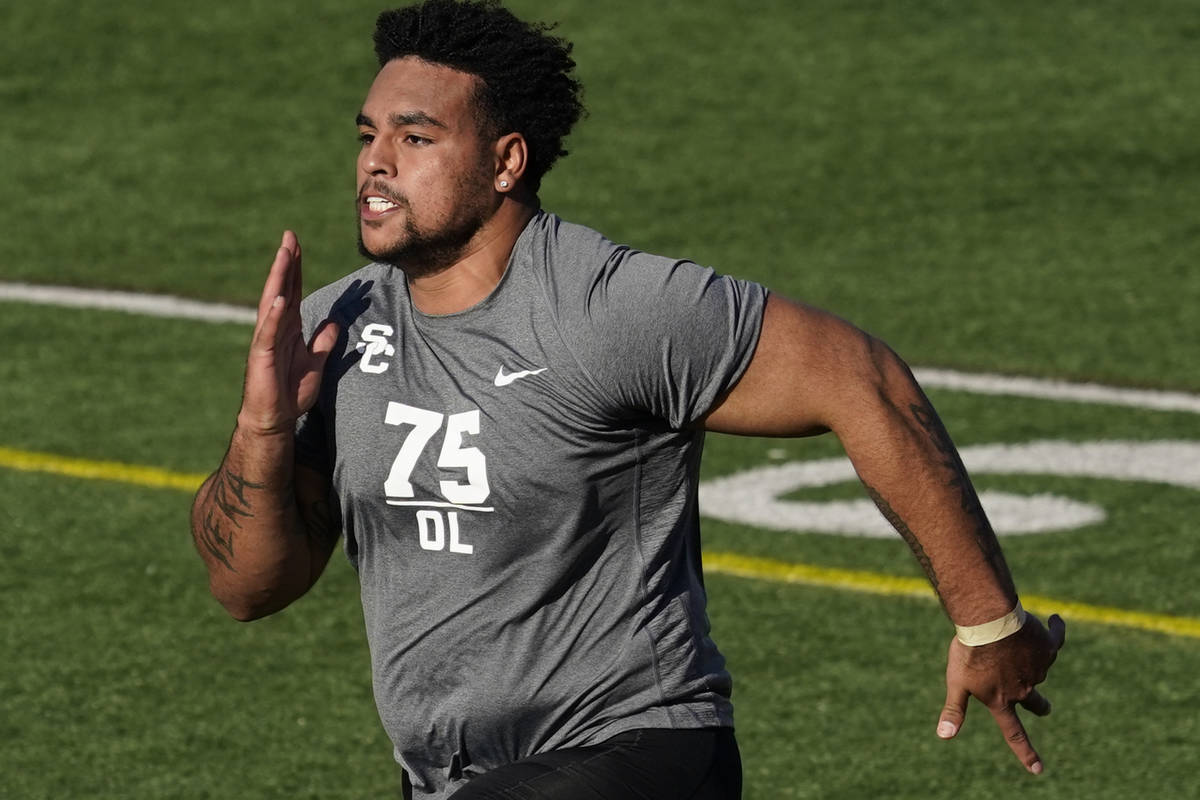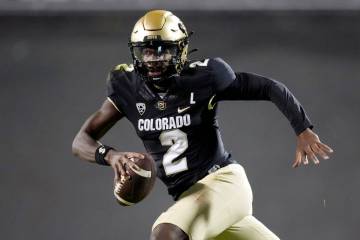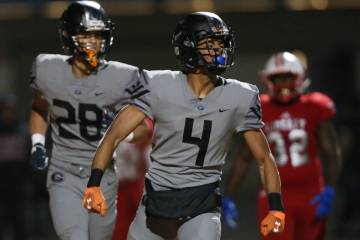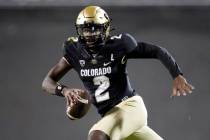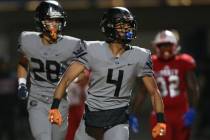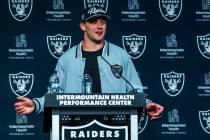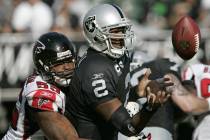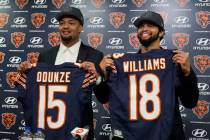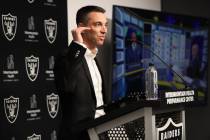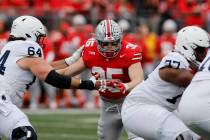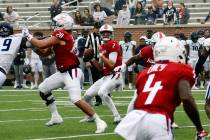Lack of draft combine leaves NFL front offices guessing
Ask any NFL executive for an honest answer about the biggest downside of not having a scouting combine in Indianapolis for the first time in 40 years and they may tell you it’s missing out on the shrimp cocktail at St. Elmo Steak House.
But there are certainly practical ramifications when it comes to preparing for the draft.
Most fans know the event, held each February at Lucas Oil Stadium, for the on-field action like the 40-yard dash and 3-cone drill among many other tests of athleticism and acumen.
The so-called “Underwear Olympics” allows teams to scour every detail of a prospect’s body and mind for the first time in the pre-draft process.
While fans and even players get excited about the results of the on-field events, teams tend to get more use out of the medical examinations and individual interview sessions.
A smaller group of players did travel to Indianapolis for thorough vetting of their medicals, but it didn’t happen until late in the process and amounted to only about half of the 300 players typically in the draft pool.
“We’re still scrambling on medicals, as is every team in the league,” Raiders’ general manager Mike Mayock said Thursday, a week out from the first round.
A guessing game
The rest of the process has been similarly chaotic. Players would usually have the opportunity to perform at the combine against all of their peers and then at a pro day on campus in a more comfortable setting to improve on their performance or validate the numbers they put up at the combine.
Teams would have a chance to attend those same pro days and meet individually with the players to get to know them a bit better, then fly select prospects in to their team facilities to get a feel for who they are as people even more than as players.
COVID-19 restrictions didn’t allow for those face-to-face meetings and made those pro days more formal and less interactive. The format also meant a lack of the standardization teams would be able to get from using the same timing mechanisms at the combine.
The new arrangement was less than ideal for both the NFL teams and prospective draftees.
“I would say there’s a little more pressure because this is pretty much our only interview for the job,” Auburn wide receiver Anthony Schwartz said of his pro day. “We don’t have the combine or the in-house workouts to impress teams. This is pretty much it. So I feel like there was some pressure and it made me a little more nervous.”
Team decision-makers also felt the pressure of trying to do all the due diligence they usually do on players with far less access.
“I like to see guys move,” Mayock said. “I want to feel a guy coming off the line of scrimmage. I want to feel a quarterback throw. Unfortunately, we didn’t get a chance to sit and meet with the kids, which I think is the biggest downside of the whole thing.
“Even though we got a lot of information and we got after it, it’s not the same as sitting down with a kid, having dinner with him, having lunch with him, watching tape with him. It’s a little different conversation.”
Mayock indicated a frustration with the shorter Zoom interactions where some players can seem overly coached and are less likely to let their guard down than when you can spend a day with them and can truly start to see what makes them click.
Getting creative
He wasn’t alone. Other coaches had to find creative ways to try to find out the information they wanted to know about potential draftees.
New Eagles coach Nick Sirianni said he would play rock, paper, scissors with players during his Zoom meetings.
The idea wasn’t to find out how good they were at the game, a piece of information that is obviously irrelevant. What Sirianni wanted to know was how competitive they were and how they would react to some good old-fashioned trash talk.
Of course, not all of the interactions between teams and players are so frivolous.
A certain number of potential draftees each year have yellow flags for everything from off-the-field issues to who they hang around with to questions about their enthusiasm for the game.
According to Mayock, it may be tougher than ever to take a chance on some of those players without the ability to fully vet them. In normal years, some of those yellow flags can turn to green lights if a team is fully convinced there is nothing to worry about. Then again, yellow flags can also turn red if a player can’t provide satisfactory answers.
“You’re trying to either eliminate (the yellow flags) or endorse them and go, ‘Yup, that’s a problem, he’s done,’” Mayock said. “So, a big part of getting ready for a draft is getting your draft board down to a manageable size. And that’s been the hardest part with a lack of medical and sometimes a lack of confirmation on who these kids really are or aren’t.”
What about opt-outs?
This year there was another layer to that with the number of players who chose to opt-out of the college football season. Mayock said the Raiders’ front office has had “lively” conversations about how to handle those cases. The consensus is that each case is different. Each of the players was asked directly about their decision and the answers varied.
“Some of them talked about their parents and having relatives that died from COVID-19 and having to go home and take care of family,” Mayock said. “So, do I think some of them may have used it as an excuse to get out of football and go train? Sure.
“But at the end of the day it’s really hard to figure out which ones, and that’s why you have to really just continue to drill down the kid, what his playing demeanor is, what his coaches think about him, all of your different sources. Because it’s really a can of worms. I think every team will look at those opt-outs a little differently.”
The opt-outs also added a new layer of questions about some of the pro day performances. Some players put up remarkable numbers that left personnel people asking whether they were legitimate representations of their athleticism or were just a result of hyper-focusing on the drills during those months they would have normally been playing games.
Then again, an opt-out who had a mediocre performance may leave pro scouts scratching their head at exactly what that player had been doing the last few months.
So basically, all the changes have added even more questions to a drafting process that is often a crapshoot even in the best of circumstances.
Even when things hopefully return to normal next year in Indianapolis, the only sure thing will be the shrimp cocktail.
Contact Adam Hill at ahill@reviewjournal.com. Follow @AdamHillLVRJ on Twitter.



